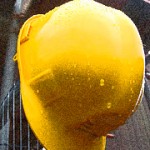Bringing in the
New Year is always an exciting time for everyone. People enjoy setting new goals, looking forward to the journey that the New Year brings and starting that resolution they promise they are going to keep. While the New Year brings many things to look forward to, it also is a time where we look back at the year that has passed and take a moment to reflect on what has happened.
At Emilcott, 2011 was a successful year where we were able to tackle new projects, serve our clients and continue to respond to current industry issues in the environmental, health and safety field. Though we have had many great memories from 2011, we would like to mention some of the things that stood out most in our business for 2011.
Hurricane Irene the immense and powerful Atlantic hurricane that left a path of destruction and devastation was something that definitely stands out in 2011. We remember this event not only because of the wreckage caused by the storm, but also because of the after effects. The staff at Emilcott recognized the importance of addressing the legacy of water intrusion and the promise of mold after the storm and stressed to clients
the importance of timing to address how to respond to this problem, as well as the importance of selecting the proper remediation technique along with an EHS mold expert and Emilcotts mold remediation strategy.
(Read more: Hurricane Irene Leaves a Legacy of Water Intrusion and the Promise of Mold)
Energy Sector Emilcott has been thrilled to be able to participate in many different initiatives within the energy sector. Regionally important to the growth of our economy, the ongoing infrastructure improvements have given us substantial health and safety support work. In EHSWire during 2011 we addressed many occupational hazards as
Occupational Heat-related Illnesses where we went over the symptoms that workers may experience, as well as what should be done if someone does experience these symptoms. Besides dealing with working conditions such as heat, Emilcott also provided information on the truths about
occupational slips, trips and falls which ended up costing American businesses
$13.67 billion in workers compensation costs in 2008. Adhering to proper safety protocols and preventing injuries is something that benefits businesses and their workers. OSHA provides a
Walking/Working Surfaces Safety and Health Topic page which provides links to all the applicable standards.
With issues such as
heat affecting the health of workers to preventing injuries on job sites, Emilcott has seen our fair share of mishaps. Being able to share our experiences and knowledge with others never gets old. From teaching someone the
hazards about working near a crane, or things you should do when working in certain environments, Emilcott has always tried keeping people in the loop. We even have a
10-Hour Construction Industry Outreach Training Course based on the requirements established by OSHA which is a very hands-on and interactive class that we recommend to avoid a future work related issue.
(Read more: Work Near a CRANE? Learn the Hazards!)
9/11 Tenth Anniversary focused the changes that have occurred since
9/11/2001 such as the new precautions that have taken place on the
American Chemical Security issue. The DHS (the Department of Homeland Security) has been increasing their focus on utilities and chemical facilities which may become targets for terrorist activities and the
DHS Chemical Facility Anti-Terrorism Standard (CFATS) now requires completing and submitting a Top Screen analysis to the DHS.
The
James Zadroga Act
, which was authorized to broaden, renew funding and extend benefits to Ground Zero workers whose death was a result of exposure, is of great significance and has put new emphasis on the importance of proper real-time environmental site monitoring. New technologies are available to protect site workers and the public from exposure to hazardous substances such as those from the collapse of the WTC towers.
(Read more: 9/11 Tenth Anniversary Focuses on American Chemical Security)
Toxic Substance Control Act (TSCA) was of major importance not only to Emilcott, but also to facilities who are manufacturers or importers of
chemicals in amounts of 25,000 pounds or greater. With so many questions regarding TSCA and the changes, Emilcott decided to put on a
free webinar along with posting a number of blogs that answered many of the concerns our clients had. Emilcott was able to use its expertise and help many clients with TSCA compliance questions and concerns regarding the developments of IUR reporting and reporting obligations in 2011 for the calendar year 2010.
(Read more: August 2011 Update on the TSCA IUR-now-CDR Rule)
Though Emilcott has had
many remarkable memories of 2011, we felt these 4 really left an impression on our business. Emilcott is privileged to know that we were able to assist our clients in many different businesses not only in 2011, but throughout our history. Emilcott looks forward to a productive 2012 and we are excited to see what this year has in store for us.
Do you have any environmental, health or safety
concerns for 2012? If so, please share them with us below!












